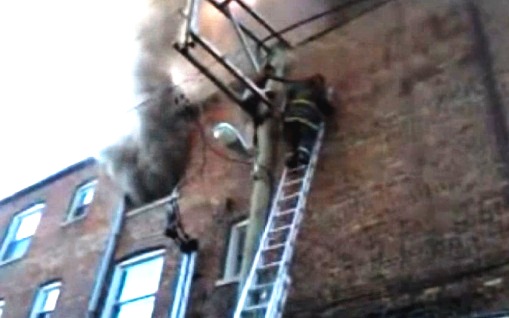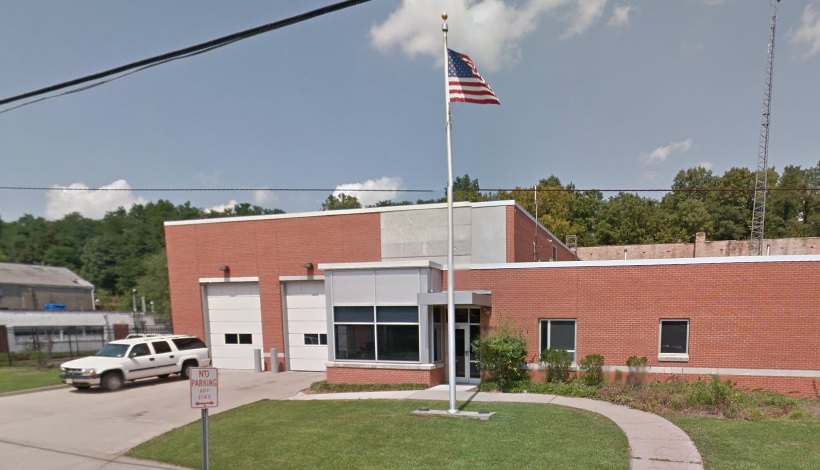What is it about the Potomac River that prevents 911 centers from communicating?
Poor communications constantly delays mutual aid between DC and Arlington
Looking for a quality used fire truck? Selling one? Visit our sponsor Command Fire Apparatus
The video above shows Arlington County Fire Department Engine 105 and Medic 105 at exactly 6:45 p.m. last night. They were responding to Washington, DC for a motorcycle crash with a critical injury. It occurred in the I-395 express lanes at the far end of the 14th Street Bridge complex over the Potomac River. Medic 105 ended up treating the most seriously injured of the two people involved in the crash.
The good news here is the Arlington units were dispatched as part of an automatic aid agreement between the two departments. DC Fire & EMS Chief John Donnelly and Arlington County Fire Department Chief David Povlitz worked hard for some time to forge that agreement. It covers calls on the bridges and roadways connecting the two jurisdictions and for responses on the Potomac River. This was a big move for DC Fire & EMS which, until now, has not participated in automatic responses with its neighbors. That doesn’t mean DC doesn’t do mutual aid. It is handled as requested. It is usually limited to major incidents.
This crash is a perfect reason why the agreement is needed. DC Fire & EMS must drive into Arlington’s Crystal City to safely access the I-395 northbound express lanes (see the video below showing DC units heading to Crystal City last night). The ACFD units, responding from Aurora Highlands adjacent to Crystal City, have a straight shot to the highway entrance about nine blocks from the firehouse. They should be able to get to an incident like this minutes before the DC units. But, last night, Engine 105 and Medic 105 were just getting on the highway when the first DC units pulled up to the crash.
Here’s the reason for Arlington’s delay. DC 911’s center, the Office of Unified Communications (OUC), dispatched this run to DC Fire & EMS at 6:31 p.m. Arlington’s units didn’t get the call from the county’s Emergency Communications Center (ECC) until at least seven minutes later. We don’t yet know what time OUC relayed the call to ECC.
This delay is not unusual. Regular monitoring of these calls shows that three minutes is about the shortest turnaround time. More often it takes five or six minutes. Many others have taken seven minutes or even 10 minutes. How can this be?
We live in an age of instant communication. Even before 9/11, most fire departments in the DC area could communicate on the same radio channels. Going back almost a half-century, I could push one button on my dispatch console at Prince George’s County Fire Communications and simultaneously alert the three adjoining counties of Anne Arundel, Howard and Montgomery, along with the Prince George’s units, about a fire in Laurel, Maryland. What is it about getting an urgent message across the Potomac River that’s so difficult in 2024?
Because automatic aid like this is new to DC Fire & EMS, OUC, unlike the rest of the region’s 911 centers, is not connected to the CAD to CAD system. I understand that’s a bit of an impediment. That still doesn’t excuse a gap of three, six, or 10 minutes. Or a recent attempted suicide on the Chain Bridge over the Potomac, where OUC completely forgot to alert Arlington until 20 minutes into the incident.
You wouldn’t be wrong to put a lot of the blame on DC’s problem-plagued 911 center. Compared to Arlington’s ECC, OUC handles a significantly higher volume of 911 calls. It is also extremely understaffed. In addition, the agency has long shown an inability to adapt to the demands of fire and EMS. OUC regularly fails at the basics of running a 911 center. Adding mutual aid duties on top of everything else seems to be more than DC 911 can handle.
But communication is a two-way street. We still don’t know the specifics of where the ball was dropped last night. Let’s hope DC and Arlington can find something better than the current slow-moving rowboat to get emergency messages across the rough waters of the Potomac. Failing to fix this slows response times and undermines the advantage for the public of this important mutual aid agreement.







